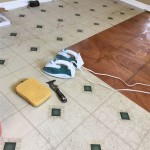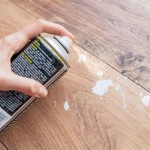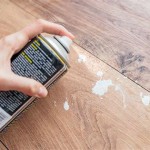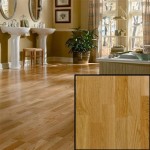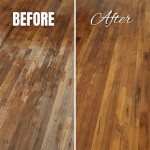Is Luxury Vinyl Plank Flooring Toxic? A Comprehensive Examination
Luxury Vinyl Plank (LVP) flooring has surged in popularity as a cost-effective, durable, and aesthetically versatile alternative to hardwood, tile, and laminate. However, concerns regarding the potential toxicity of LVP have become increasingly prevalent. This article provides a detailed examination of the chemicals present in LVP, potential health risks associated with its use, and factors to consider when selecting LVP flooring to minimize exposure to harmful substances.
LVP is a multi-layered synthetic flooring product typically composed of the following layers: a wear layer (often made of polyurethane or a similar protective coating), a vinyl print film (providing the decorative appearance), and one or more vinyl core layers (responsible for structural integrity). Some LVP products may also include an attached underlayment for added comfort and sound absorption. The composition of these layers, particularly the vinyl core, is the primary source of concern regarding potential toxicity.
Vinyl, or Polyvinyl Chloride (PVC), is a plastic polymer produced through the polymerization of vinyl chloride monomer (VCM). While PVC itself is relatively stable, the manufacturing process and the additives incorporated into vinyl flooring products can introduce potentially harmful chemicals. These chemicals may off-gas into the indoor environment, posing potential health risks to occupants. Understanding the specific chemicals of concern and their potential effects is crucial for making informed decisions about LVP flooring.
Key Chemicals of Concern in LVP Flooring
Several chemicals commonly found in LVP flooring have raised concerns among health professionals and environmental advocates. These include phthalates, volatile organic compounds (VOCs), heavy metals, and organotins. The presence and concentration of these chemicals can vary significantly depending on the manufacturer, production process, and specific product formulation.
Phthalates: Phthalates are a group of chemicals often used as plasticizers in PVC to increase its flexibility and durability. They are not chemically bound to the PVC and can therefore leach out over time. Exposure to phthalates has been linked to various health problems, including endocrine disruption, reproductive and developmental issues, and respiratory problems. Certain phthalates, such as di(2-ethylhexyl) phthalate (DEHP), dibutyl phthalate (DBP), benzyl butyl phthalate (BBP), diisononyl phthalate (DINP), and diisodecyl phthalate (DIDP), have been the subject of particular scrutiny and regulation. While some manufacturers have phased out certain phthalates in favor of alternatives, it is essential to verify the phthalate content of LVP products before purchase.
Volatile Organic Compounds (VOCs): VOCs are a broad category of organic chemicals that evaporate at room temperature. LVP flooring can emit VOCs from various components, including the vinyl core, adhesives, and surface coatings. Common VOCs found in LVP include formaldehyde, benzene, toluene, ethylbenzene, and xylene (BTEX). Exposure to VOCs can cause a range of adverse health effects, including eye, nose, and throat irritation, headaches, dizziness, nausea, and in some cases, long-term health problems such as respiratory issues and cancer. The level of VOC emissions from LVP can vary significantly depending on the product's composition and age. Newly installed LVP tends to emit higher levels of VOCs, which gradually decrease over time.
Heavy Metals: Heavy metals, such as lead, cadmium, and mercury, can be present in LVP flooring as pigments, stabilizers, or processing aids. While the use of lead in PVC manufacturing has been largely phased out in many countries, it is essential to verify that LVP products are lead-free. Exposure to heavy metals can have serious health consequences, including neurological damage, kidney problems, and developmental issues. Children are particularly vulnerable to the effects of heavy metal exposure.
Organotins: Organotins are a group of chemicals used as stabilizers in PVC production to prevent degradation during processing and use. Some organotins, such as tributyltin (TBT), have been shown to have endocrine-disrupting effects and can negatively impact aquatic life. While the use of TBT has been restricted in many applications, it is important to ensure that LVP products do not contain harmful organotins.
Factors Influencing the Toxicity of LVP
The potential toxicity of LVP flooring is influenced by several factors, including the raw materials used, the manufacturing process, the age of the flooring, and the environmental conditions in the indoor environment. Understanding these factors can help consumers make more informed decisions and mitigate potential risks.
Raw Materials and Manufacturing Process: The quality and composition of the raw materials used in LVP production have a direct impact on its potential toxicity. Manufacturers that use virgin PVC resin and avoid the use of harmful additives generally produce less toxic flooring. The manufacturing process also plays a crucial role. Processes that involve high temperatures or the use of volatile solvents can result in higher levels of VOC emissions. Look for LVP products that are manufactured using environmentally responsible processes and that are certified by independent organizations.
Age of the Flooring: Newly installed LVP flooring tends to emit higher levels of VOCs than older flooring. This is because the chemicals used in the manufacturing process gradually off-gas over time. Therefore, it is important to ventilate the area thoroughly after installing new LVP flooring to allow VOCs to dissipate. Over time, the rate of VOC emissions will decrease, but some level of off-gassing may continue throughout the flooring's lifespan.
Environmental Conditions: The temperature and humidity of the indoor environment can affect the rate of VOC emissions from LVP flooring. Higher temperatures and humidity levels tend to increase the rate of off-gassing. Additionally, exposure to sunlight can accelerate the degradation of PVC and increase the release of harmful chemicals. Maintaining a moderate temperature and humidity level and protecting LVP flooring from direct sunlight can help minimize VOC emissions.
Minimizing Exposure to Harmful Substances in LVP
While concerns about the toxicity of LVP flooring are valid, there are several steps that consumers can take to minimize their exposure to harmful substances. These include selecting low-VOC products, ventilating the area after installation, and maintaining good indoor air quality.
Selecting Low-VOC Products: One of the most effective ways to reduce exposure to harmful chemicals is to choose LVP flooring products that are certified to have low VOC emissions. Look for certifications from organizations such as FloorScore, GreenGuard, and UL GREENGUARD Gold. These certifications indicate that the flooring has been tested and meets stringent standards for VOC emissions. Products with these certifications typically emit significantly lower levels of VOCs than conventional LVP flooring.
Ventilating After Installation: After installing new LVP flooring, it is essential to ventilate the area thoroughly for several days or weeks. Open windows and doors to allow fresh air to circulate and remove VOCs that are being released from the flooring. Using fans can also help to improve air circulation. Continue to ventilate the area regularly, even after the initial installation period, to maintain good indoor air quality.
Maintaining Good Indoor Air Quality: In addition to selecting low-VOC products and ventilating after installation, there are other steps that consumers can take to maintain good indoor air quality. These include using air purifiers with HEPA filters to remove particulate matter and VOCs from the air, avoiding the use of harsh cleaning chemicals, and regularly cleaning and vacuuming the flooring to remove dust and debris that may contain harmful chemicals. Maintaining a moderate temperature and humidity level can also help to minimize VOC emissions.
Furthermore, exploring alternative flooring options with lower potential for toxicity remains a viable strategy. Natural materials such as solid wood, cork, bamboo, and linoleum are often cited as healthier alternatives to LVP, though these options may come with different cost, durability, and maintenance considerations. Thorough research and careful consideration of individual needs and priorities are essential when selecting flooring materials.
The use of specialized sealants designed to encapsulate residual VOC emissions from LVP flooring is another mitigation strategy, although the long-term effectiveness and safety of such sealants require further investigation. Choosing LVP flooring from reputable manufacturers known for their commitment to environmental stewardship and transparency in product formulation is also crucial. Contacting the manufacturer directly to inquire about the chemical composition of their products and any relevant testing data can provide valuable insights.

The Dangers Of Luxury Vinyl Floors Lvt And How You Can Avoid Them Artisan Wood Llc

The Dangers Of Luxury Vinyl Floors Lvt And How You Can Avoid Them Artisan Wood Llc

Is Vinyl Flooring Toxic A Detailed Investigation My Chemical Free House

Is Lvp Flooring Toxic Here What Our Expert Says

Is Wpc Vinyl Flooring Toxic 3c Rigid Core Luxury Plank Pvc Sheeet Manufacturer
Non Toxic Vinyl Plank Flooring Brands The Risks My Chemical Free House

6 Vinyl Flooring Myths Get The Facts From Our Experts

The Toxic Problem With Vinyl Flooring That No Warned You About

The Disadvantages Of Vinyl Plank Flooring A Guide Reallyfloors America S Est Hardwood

Non Toxic Vinyl Plank Flooring Brands The Risks My Chemical Free House
See Also
